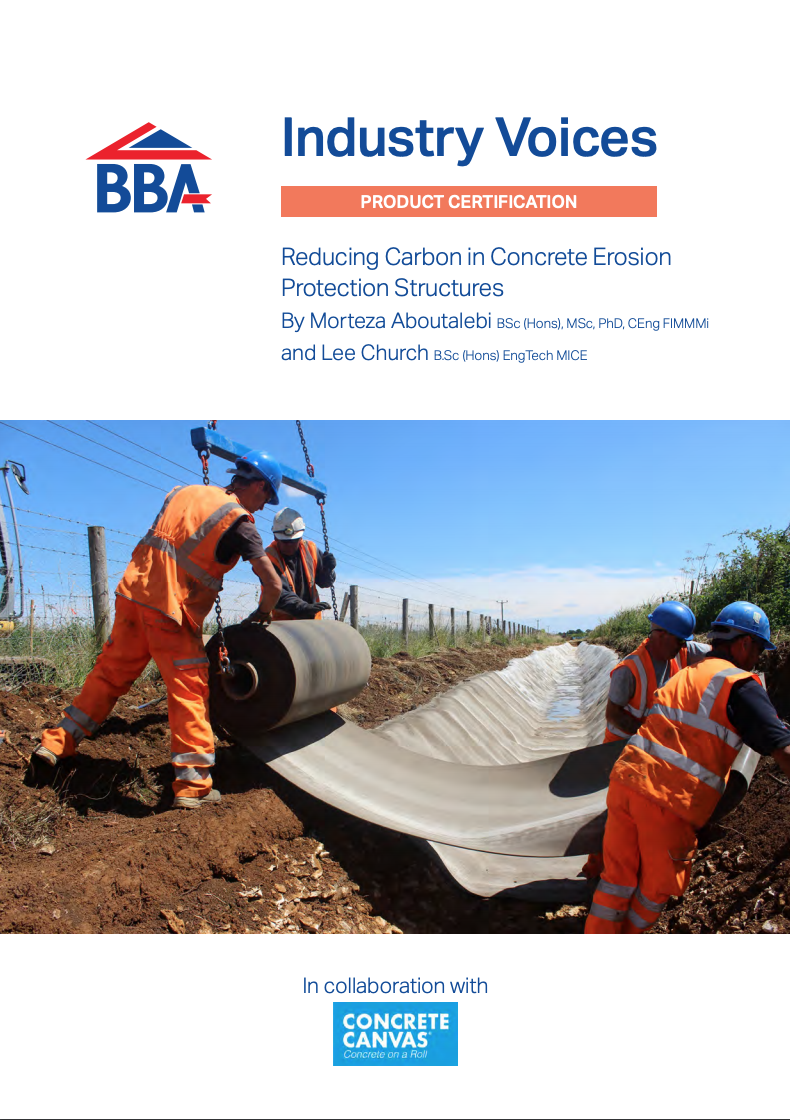GUEST POST
Earlier this year I interviewed Keith Waller, Programme Director of the Construction Innovation Hub (CIH) who explained how the Hub’s work on Product Platforms can help the industry tackle many of its long-standing weaknesses in areas like productivity, quality, safety and environmental impact. The subsequent blog post has generated so much interest that BBA invited Keith to explain more in a webinar with me and Technical Director Bill Hewlett. If you have an hour, I’d recommend watching the whole conversation but if you are a bit more time poor, here are some of the key themes.
We need to tell a compelling story
The CIH is an enabler, and it sees a big part of its role as articulating the scale of the benefits a product platform approach brings to the built environment and the construction industry.
Keith’s view is that the potential goes way beyond the major financial gains from increased efficiency and reduced waste – important though they are. A step change in safety was just one example discussed in the webinar. The reviews and inquiries that have followed the Grenfell tragedy show that poor quality work and a culture in which it is acceptable to make substitutions for specified products, have played a big role in undermining the safety of high rise residential buildings across the UK. The platform approach offers the prospect of getting to the same level of product safety, quality, and reliability we see in manufacturing alongside full traceability of components. You don’t see a gap between the door and the frame in your car, so why do we accept this kind of poor fit-out and installation in buildings?
Platforms also shift more activity into the controlled environment of the factory, reducing the risk to construction workers and surely making the sector more attractive at a time when it is struggling to attract skilled labour.
Keith explained that this value – which extends to many other aspects of performance – is very widely available. Analysis by the Hub suggests that circa 70% of the government’s £50B+ future pipeline of public and private sector work could be addressed in some way by platform approaches. CIH’s physical sandpits are also generating evidence that the approach is feasible and really delivers what has been promised.
…and embrace radical change to how we do things around here…
Keith argued that despite claims to the contrary, the construction industry is actually quite good at innovating. Unfortunately, this innovation is primarily tactical and often amounts to doing the same thing better. Keith identifies also that individual innovations rarely have impact beyond their host project.
Platforms on the other hand entail a fundamentally different approach to how products and solutions are developed, and supply and demand is managed. In this world demand is aggregated and standardised across long term pipelines of work, allowing innovations to be replicated across many projects. Suppliers can invest strategically for the market, and bodies like the BBA can work with them on the certification or assurance needed to ensure that products are compliant with the demands of the platform.
Similarly, Bill argued, that we shouldn’t think of Platforms as a synonym for offsite, modular construction. This is really a whole different way of thinking about how construction is done whose key elements include a defined component set, with defined standard interfaces and much greater integration between the supply chain and manufacturers. This system is then oiled by interoperable date flowing through the systems and drawing it together.
Everyone needs to move together
Keith agreed with me that in terms of what its policies say should be done, the UK government is doing a good job in fostering a Platform Approach. Key documents including the Construction Playbook state clearly that where possible, establishing Platforms is one of a series of policies that central government clients should be adopting on a comply or explain basis. Keith quipped that unfortunately, while the Crown is indivisible in law, that’s not the case when the public sector addresses the market. As a result, there are still too many clients specifying their needs on a project-by-project basis, reducing the scope for developing deeper product markets and wider industry capability. He argued however, that the industry also needs to shift. Firstly by holding government’s feet to the fire and not accepting weak excuses from clients who have not embraced platform thinking. Secondly industry needs to look at its own behaviour – for example designers need to be challenged if they are introducing unnecessary bespoke features and contractors shouldn’t fall back on traditional construction processes and relationships. More broadly the supply chain needs to think about its business models. Do designers move from a project to a product mindset, selling designs not hours – and thinking in terms of single design solutions deployed many times? Will more purchasing power go through product manufacturers, shifting traditional contractors into a role of skilled assemblers? Will the supply chain move to offering built environment services rather than selling physical assets – after all Rolls Royce have been selling power by the hour rather than engines for more than 60 years.
On a similar note, Bill observed that while making big upfront investments can be challenging for an industry wedded to positive cash flow at all times, there was an opportunity to be a first mover and develop product platforms for different sectors. He saw scope across both buildings and civil infrastructure, in areas including schools, healthcare, low and high rise residential, commercial, and industrial facilities, rail and motorway bridges. He added that there is also an opportunity for designers to embrace the creativity that comes from constraint, noting how interesting buildings can be developed from a very limited number of elements.
Change is coming
The construction industry is facing demands to deliver much more in areas including building lifetime safety, carbon and its contribution to levelling up. If we combine this with the opportunities being generated by digital technology, big data and the embrace of manufacturing thinking, its clear that the industry is on the brink of major change. Keith ended the webinar by issuing a call for industry players to form a coalition of the willing, focused on working pragmatically through the steps needed to realise a platform approach and in doing so deliver a better Built Environment.
BOX – Construction Product Platforms
Product Platforms are used across manufacturing industry for everything from airlines to trainers to unlock benefits of scale and repeatability and have underpinned enormous gains in productivity, quality, and performance. They are made up of a set of common assets that can be configured in various ways. Standardised interfaces with core elements define how other parts can be slotted into the system, including any requirements for data flows. This does allow for a high degree of variation in finished products – think different soles, laces and colour finishes on ranges of trainers.
The latest version of Construction Innovation Hub’s Product Platform Rulebook (March 2023) sets out 5 rules for establishing a Product Platform in the construction sector.
- Deployable: It should be possible to use the platform to deliver non identical buildings and parts of buildings
- Configurable: It should be possible to comply with variations in requirements across different projects using the common repeatable elements of the platform
- Common repeatable elements: The platform must be made up of common repeatable elements including a kit of parts and production processes – that can be delivered by multiple independent manufacturers
- Interfaces: Platforms must have defined interfaces between core elements, and these must be available to all designers, specifiers and suppliers of complementary products
- Open: It must be possible for any party to make use of all the common repeatable elements of the platform.

AUTHOR PROFILE:
Andrew Crudgington is an independent researcher and writer who works across the built environment. Previously he was Director of Policy at the Institution of Civil Engineers.
Share This Story, Choose Your Platform!
Related News
GUEST POST
Earlier this year I interviewed Keith Waller, Programme Director of the Construction Innovation Hub (CIH) who explained how the Hub’s work on Product Platforms can help the industry tackle many of its long-standing weaknesses in areas like productivity, quality, safety and environmental impact. The subsequent blog post has generated so much interest that BBA invited Keith to explain more in a webinar with me and Technical Director Bill Hewlett. If you have an hour, I’d recommend watching the whole conversation but if you are a bit more time poor, here are some of the key themes.
We need to tell a compelling story
The CIH is an enabler, and it sees a big part of its role as articulating the scale of the benefits a product platform approach brings to the built environment and the construction industry.
Keith’s view is that the potential goes way beyond the major financial gains from increased efficiency and reduced waste – important though they are. A step change in safety was just one example discussed in the webinar. The reviews and inquiries that have followed the Grenfell tragedy show that poor quality work and a culture in which it is acceptable to make substitutions for specified products, have played a big role in undermining the safety of high rise residential buildings across the UK. The platform approach offers the prospect of getting to the same level of product safety, quality, and reliability we see in manufacturing alongside full traceability of components. You don’t see a gap between the door and the frame in your car, so why do we accept this kind of poor fit-out and installation in buildings?
Platforms also shift more activity into the controlled environment of the factory, reducing the risk to construction workers and surely making the sector more attractive at a time when it is struggling to attract skilled labour.
Keith explained that this value – which extends to many other aspects of performance – is very widely available. Analysis by the Hub suggests that circa 70% of the government’s £50B+ future pipeline of public and private sector work could be addressed in some way by platform approaches. CIH’s physical sandpits are also generating evidence that the approach is feasible and really delivers what has been promised.
…and embrace radical change to how we do things around here…
Keith argued that despite claims to the contrary, the construction industry is actually quite good at innovating. Unfortunately, this innovation is primarily tactical and often amounts to doing the same thing better. Keith identifies also that individual innovations rarely have impact beyond their host project.
Platforms on the other hand entail a fundamentally different approach to how products and solutions are developed, and supply and demand is managed. In this world demand is aggregated and standardised across long term pipelines of work, allowing innovations to be replicated across many projects. Suppliers can invest strategically for the market, and bodies like the BBA can work with them on the certification or assurance needed to ensure that products are compliant with the demands of the platform.
Similarly, Bill argued, that we shouldn’t think of Platforms as a synonym for offsite, modular construction. This is really a whole different way of thinking about how construction is done whose key elements include a defined component set, with defined standard interfaces and much greater integration between the supply chain and manufacturers. This system is then oiled by interoperable date flowing through the systems and drawing it together.
Everyone needs to move together
Keith agreed with me that in terms of what its policies say should be done, the UK government is doing a good job in fostering a Platform Approach. Key documents including the Construction Playbook state clearly that where possible, establishing Platforms is one of a series of policies that central government clients should be adopting on a comply or explain basis. Keith quipped that unfortunately, while the Crown is indivisible in law, that’s not the case when the public sector addresses the market. As a result, there are still too many clients specifying their needs on a project-by-project basis, reducing the scope for developing deeper product markets and wider industry capability. He argued however, that the industry also needs to shift. Firstly by holding government’s feet to the fire and not accepting weak excuses from clients who have not embraced platform thinking. Secondly industry needs to look at its own behaviour – for example designers need to be challenged if they are introducing unnecessary bespoke features and contractors shouldn’t fall back on traditional construction processes and relationships. More broadly the supply chain needs to think about its business models. Do designers move from a project to a product mindset, selling designs not hours – and thinking in terms of single design solutions deployed many times? Will more purchasing power go through product manufacturers, shifting traditional contractors into a role of skilled assemblers? Will the supply chain move to offering built environment services rather than selling physical assets – after all Rolls Royce have been selling power by the hour rather than engines for more than 60 years.
On a similar note, Bill observed that while making big upfront investments can be challenging for an industry wedded to positive cash flow at all times, there was an opportunity to be a first mover and develop product platforms for different sectors. He saw scope across both buildings and civil infrastructure, in areas including schools, healthcare, low and high rise residential, commercial, and industrial facilities, rail and motorway bridges. He added that there is also an opportunity for designers to embrace the creativity that comes from constraint, noting how interesting buildings can be developed from a very limited number of elements.
Change is coming
The construction industry is facing demands to deliver much more in areas including building lifetime safety, carbon and its contribution to levelling up. If we combine this with the opportunities being generated by digital technology, big data and the embrace of manufacturing thinking, its clear that the industry is on the brink of major change. Keith ended the webinar by issuing a call for industry players to form a coalition of the willing, focused on working pragmatically through the steps needed to realise a platform approach and in doing so deliver a better Built Environment.
BOX – Construction Product Platforms
Product Platforms are used across manufacturing industry for everything from airlines to trainers to unlock benefits of scale and repeatability and have underpinned enormous gains in productivity, quality, and performance. They are made up of a set of common assets that can be configured in various ways. Standardised interfaces with core elements define how other parts can be slotted into the system, including any requirements for data flows. This does allow for a high degree of variation in finished products – think different soles, laces and colour finishes on ranges of trainers.
The latest version of Construction Innovation Hub’s Product Platform Rulebook (March 2023) sets out 5 rules for establishing a Product Platform in the construction sector.
- Deployable: It should be possible to use the platform to deliver non identical buildings and parts of buildings
- Configurable: It should be possible to comply with variations in requirements across different projects using the common repeatable elements of the platform
- Common repeatable elements: The platform must be made up of common repeatable elements including a kit of parts and production processes – that can be delivered by multiple independent manufacturers
- Interfaces: Platforms must have defined interfaces between core elements, and these must be available to all designers, specifiers and suppliers of complementary products
- Open: It must be possible for any party to make use of all the common repeatable elements of the platform.

AUTHOR PROFILE:
Andrew Crudgington is an independent researcher and writer who works across the built environment. Previously he was Director of Policy at the Institution of Civil Engineers.
Share This Story, Choose Your Platform!
Related News
Get in touch
Please complete the form below and we will contact you as soon as possible.
To help us to respond to your inquiry as quickly as possible, we have put a handy list of our services below.


